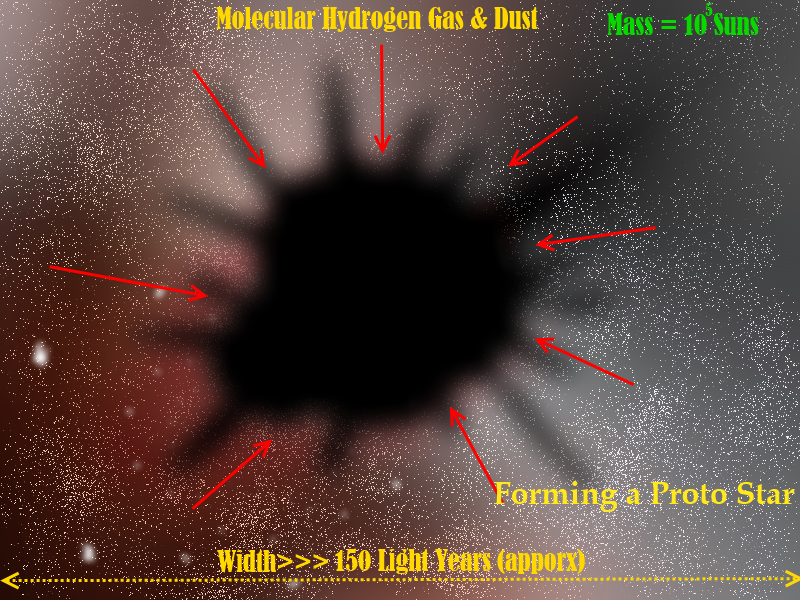Star Formation - Protostar (In the womb of a Nebula)
All the stars in the universe have a life span; they take birth, shine for a certain time and then die. Nebulae (huge and massive cloud of gases such as hydrogen and dust particle in outer space) are the birth place of stars. Stars take birth from molecular clouds of Hydrogen gas (H2) and dust in a nebula. These molecular clouds can be as massive as 1,000,000 Suns and as wide as 100 to 150 light years in diameters.

These clouds are very cold (about 15 K) and once they are cold enough that the thermal energy pushing the particles in them apart becomes weaker as compared to the gravitational force pulling these particles together. Due to the higher gravitation force, these gaseous particles start to pull towards the centre (where the gravity is highest). This is called the collapsing of these gaseous clouds. As a result these clouds got denser and denser due to the more and more particles coming into smaller space, due to the gravity. These dense dark clouds are very early stage of a star, we name it as a Protostar as shown below:

Now as these gaseous particles coming closer and closer into very dense space, the collision frequency among them start to increase, as a result the thermal pressure (heat energy created from collisions) start to increase to. Remember that Gravity is behind the collapsing of the cloud and now a defending force against gravitational force is emerging, called thermal energy pushing the mass outward.
Story Continues.......................
